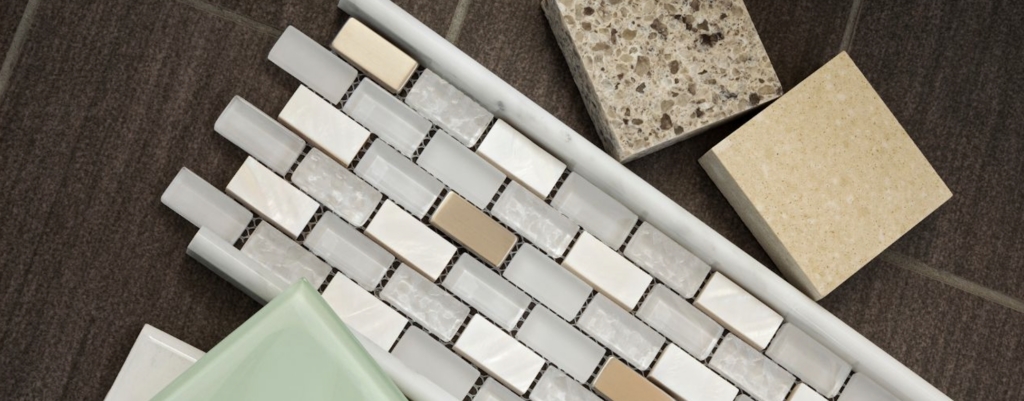Undertaking a bathroom remodel project as a contractor is an exciting yet challenging endeavor. The end goal is to transform a bathroom into a space that aligns with the client’s vision while still making it a financially rewarding venture. The crucial element in this equation is the ability to bid accurately for bathroom remodel projects. Developing an effective bidding strategy may require some initial legwork, but it’s your best bet for winning projects that are both profitable and satisfying for your clients.

Understanding the Project Scope
The initial step toward crafting an accurate bid is gaining a comprehensive understanding of the bathroom remodel project’s scope. Relying solely on a client’s request for an estimate can be risky, as clients often do not possess a full grasp of the intricacies involved in a remodel. It’s advisable to schedule an on-site walkthrough with the clients to better comprehend their vision and objectives for the new bathroom. During this meeting, ask clarifying questions to fill in any gaps and consider elements that the client may have overlooked, such as lighting or ventilation upgrades.
Site Evaluation
After obtaining a clear picture of the project scope, conducting a meticulous site evaluation is the next step. This evaluation provides essential details that influence material requirements, labor hours, and construction methods. Precise measurements are crucial for accurately estimating quantities of materials such as tile, flooring, and lighting fixtures. Documenting factors like room dimensions, fixture dimensions, window positions, and ceiling height is essential for creating an accurate estimate.
Materials Takeoff
Using the measurements collected during the site evaluation, compile a comprehensive materials list. This list should encompass all the materials and supplies required for the project, ensuring that nothing essential is overlooked. Don’t forget to obtain quotes from your suppliers to determine precise unit prices for each material. This step enhances the accuracy of your estimate.
Labor Hours Estimation
While materials are the building blocks, labor is what brings the project to life. It’s essential to estimate the hours required for each phase of work accurately. This helps prevent underbidding and ensures that your projects remain profitable. Consider the various phases involved in the project, such as demolition, plumbing, electrical work, framing, drywall installation, and more. Identify tasks that may require specialized trades like plumbing or electrical work and factor in time for permits, inspections, and other incidental tasks.
Accounting for Overhead
Beyond direct job expenses, every business incurs overhead costs. These expenses must be factored into your bid to ensure profitability. Overhead costs may include office rent, utility bills, salaries, advertising expenses, vehicle costs, tool maintenance, legal fees, insurance, and more. To calculate overhead, review past financial records and determine the average overhead as a percentage of direct job costs. Apply this percentage to the estimated bathroom remodel costs.

Profit Margin
The bid estimate should cover all direct and indirect costs associated with the bathroom remodel project. The final component to consider is your profit margin, which sustains and grows your business. Profit margins for bathroom remodels typically range from 20-30%, but factors like overhead costs, project size, your reputation, customer price sensitivity, and competition should be taken into account. Balancing an attractive margin with competitive pricing is essential to secure the bid.
Reviewing the Completed Estimate
Before presenting the estimate to the client, conduct a final review to ensure accuracy. Recap the project scope, break down estimated costs, specify the start date and project duration, outline contingency amounts for unforeseen circumstances, and highlight any value-added services you provide. Scrutinizing the bid from all angles helps prevent costly errors.
Comparing Against Competitor Estimates
For larger or professional bathroom remodel projects, you may be competing with other contractors. Reviewing competitors’ estimates can provide valuable insights. Analyze whether other bids are significantly higher or lower, identify potential omissions or unclear scope definitions, and assess the value-added services offered by competitors. Use this information to reinforce your estimate’s strengths and justify any higher pricing to the client.
Securing a Signed Contract
Once the client accepts your bid, protect both parties by formalizing the agreement through a signed contract. Ensure the contract includes details about the scope of work, total price, payment schedule, start date, project duration, change order processes, contingencies, insurance proof, and terms for dispute resolution. Never proceed with the project without a signed agreement that sets clear expectations.
Adjusting the Bid Amount as Needed
There may be circumstances that require you to deviate from your standard markup and profit margin. Consider bidding higher when the project encounters unexpected complexities, requires an accelerated schedule, involves custom designs, or faces challenges with existing infrastructure. Conversely, bid lower for straightforward projects, standard layouts, or when trying to establish a presence in a new market.

Maintaining Profitability During the Remodel
While your comprehensive bid sets clear expectations upfront, it’s crucial to stay profitable once the remodel work begins. This involves closely tracking labor hours, monitoring material costs, obtaining client approval for any changes that increase project costs, preventing scope creep, and using project management software to track real-time costs. Regular communication with the client about expenditures helps prevent surprises.
Using Bid Templates for Efficiency
Rather than creating bids from scratch for each project, consider developing templates with standardized formats and text. Effective templates should include fields for project specifics, standard line items, pricing explanations, inclusions, exclusions, and sections for photos, floorplans, and specifications. By using templates, you can streamline the bidding process, save time, and improve accuracy.
Bathroom Remodel Bidding FAQs:
How Can I Accurately Estimate Costs For Unfamiliar Materials and Methods?
If you’re unfamiliar with certain materials or methods, it’s crucial to be transparent about your limited experience. Conduct thorough research on suppliers, obtain multiple quotes, and consult subcontractors to gain a better understanding of the work involved. Additionally, it’s wise to allocate extra contingency funds to account for any unforeseen challenges.
How Can RENDR Help Simplify the Bathroom Remodel Bidding Process?
RENDR provides a comprehensive solution that enables contractors to accurately estimate costs, manage materials, and streamline the bidding process from start to finish. Our technology-driven platform takes the guesswork out of bidding, ensuring you can confidently bid on bathroom remodel projects.
What Red Flags Indicate That a Bid May be Too Low to Complete The Job Properly?
Extremely low bids may omit critical details such as permitting, disposal fees, and the need for specialized labor for complex
Final Thoughts
Are you ready to revolutionize your approach to bathroom remodel bidding? Look no further than RENDR, your trusted partner in streamlining the initial bidding and sales process. Say goodbye to guesswork and hello to precision with our cutting-edge technology. Learn how to bid a bathroom remodel with confidence and efficiency. Try RENDR today and take the first step towards securing profitable projects with ease. Your future success in the remodeling industry starts here.
Undertaking a bathroom remodel project as a contractor is an exciting yet challenging endeavor. The end goal is to transform a bathroom into a space that aligns with the client’s vision while still making it a financially rewarding venture. The crucial element in this equation is the ability to bid accurately for bathroom remodel projects. Developing an effective bidding strategy may require some initial legwork, but it’s your best bet for winning projects that are both profitable and satisfying for your clients.

Understanding the Project Scope
The initial step toward crafting an accurate bid is gaining a comprehensive understanding of the bathroom remodel project’s scope. Relying solely on a client’s request for an estimate can be risky, as clients often do not possess a full grasp of the intricacies involved in a remodel. It’s advisable to schedule an on-site walkthrough with the clients to better comprehend their vision and objectives for the new bathroom. During this meeting, ask clarifying questions to fill in any gaps and consider elements that the client may have overlooked, such as lighting or ventilation upgrades.
Site Evaluation
After obtaining a clear picture of the project scope, conducting a meticulous site evaluation is the next step. This evaluation provides essential details that influence material requirements, labor hours, and construction methods. Precise measurements are crucial for accurately estimating quantities of materials such as tile, flooring, and lighting fixtures. Documenting factors like room dimensions, fixture dimensions, window positions, and ceiling height is essential for creating an accurate estimate.
Materials Takeoff
Using the measurements collected during the site evaluation, compile a comprehensive materials list. This list should encompass all the materials and supplies required for the project, ensuring that nothing essential is overlooked. Don’t forget to obtain quotes from your suppliers to determine precise unit prices for each material. This step enhances the accuracy of your estimate.
Labor Hours Estimation
While materials are the building blocks, labor is what brings the project to life. It’s essential to estimate the hours required for each phase of work accurately. This helps prevent underbidding and ensures that your projects remain profitable. Consider the various phases involved in the project, such as demolition, plumbing, electrical work, framing, drywall installation, and more. Identify tasks that may require specialized trades like plumbing or electrical work and factor in time for permits, inspections, and other incidental tasks.
Accounting for Overhead
Beyond direct job expenses, every business incurs overhead costs. These expenses must be factored into your bid to ensure profitability. Overhead costs may include office rent, utility bills, salaries, advertising expenses, vehicle costs, tool maintenance, legal fees, insurance, and more. To calculate overhead, review past financial records and determine the average overhead as a percentage of direct job costs. Apply this percentage to the estimated bathroom remodel costs.

Profit Margin
The bid estimate should cover all direct and indirect costs associated with the bathroom remodel project. The final component to consider is your profit margin, which sustains and grows your business. Profit margins for bathroom remodels typically range from 20-30%, but factors like overhead costs, project size, your reputation, customer price sensitivity, and competition should be taken into account. Balancing an attractive margin with competitive pricing is essential to secure the bid.
Reviewing the Completed Estimate
Before presenting the estimate to the client, conduct a final review to ensure accuracy. Recap the project scope, break down estimated costs, specify the start date and project duration, outline contingency amounts for unforeseen circumstances, and highlight any value-added services you provide. Scrutinizing the bid from all angles helps prevent costly errors.
Comparing Against Competitor Estimates
For larger or professional bathroom remodel projects, you may be competing with other contractors. Reviewing competitors’ estimates can provide valuable insights. Analyze whether other bids are significantly higher or lower, identify potential omissions or unclear scope definitions, and assess the value-added services offered by competitors. Use this information to reinforce your estimate’s strengths and justify any higher pricing to the client.
Securing a Signed Contract
Once the client accepts your bid, protect both parties by formalizing the agreement through a signed contract. Ensure the contract includes details about the scope of work, total price, payment schedule, start date, project duration, change order processes, contingencies, insurance proof, and terms for dispute resolution. Never proceed with the project without a signed agreement that sets clear expectations.
Adjusting the Bid Amount as Needed
There may be circumstances that require you to deviate from your standard markup and profit margin. Consider bidding higher when the project encounters unexpected complexities, requires an accelerated schedule, involves custom designs, or faces challenges with existing infrastructure. Conversely, bid lower for straightforward projects, standard layouts, or when trying to establish a presence in a new market.

Maintaining Profitability During the Remodel
While your comprehensive bid sets clear expectations upfront, it’s crucial to stay profitable once the remodel work begins. This involves closely tracking labor hours, monitoring material costs, obtaining client approval for any changes that increase project costs, preventing scope creep, and using project management software to track real-time costs. Regular communication with the client about expenditures helps prevent surprises.
Using Bid Templates for Efficiency
Rather than creating bids from scratch for each project, consider developing templates with standardized formats and text. Effective templates should include fields for project specifics, standard line items, pricing explanations, inclusions, exclusions, and sections for photos, floorplans, and specifications. By using templates, you can streamline the bidding process, save time, and improve accuracy.
Bathroom Remodel Bidding FAQs:
How Can I Accurately Estimate Costs For Unfamiliar Materials and Methods?
If you’re unfamiliar with certain materials or methods, it’s crucial to be transparent about your limited experience. Conduct thorough research on suppliers, obtain multiple quotes, and consult subcontractors to gain a better understanding of the work involved. Additionally, it’s wise to allocate extra contingency funds to account for any unforeseen challenges.
How Can RENDR Help Simplify the Bathroom Remodel Bidding Process?
RENDR provides a comprehensive solution that enables contractors to accurately estimate costs, manage materials, and streamline the bidding process from start to finish. Our technology-driven platform takes the guesswork out of bidding, ensuring you can confidently bid on bathroom remodel projects.
What Red Flags Indicate That a Bid May be Too Low to Complete The Job Properly?
Extremely low bids may omit critical details such as permitting, disposal fees, and the need for specialized labor for complex
Final Thoughts
Are you ready to revolutionize your approach to bathroom remodel bidding? Look no further than RENDR, your trusted partner in streamlining the initial bidding and sales process. Say goodbye to guesswork and hello to precision with our cutting-edge technology. Learn how to bid a bathroom remodel with confidence and efficiency. Try RENDR today and take the first step towards securing profitable projects with ease. Your future success in the remodeling industry starts here.